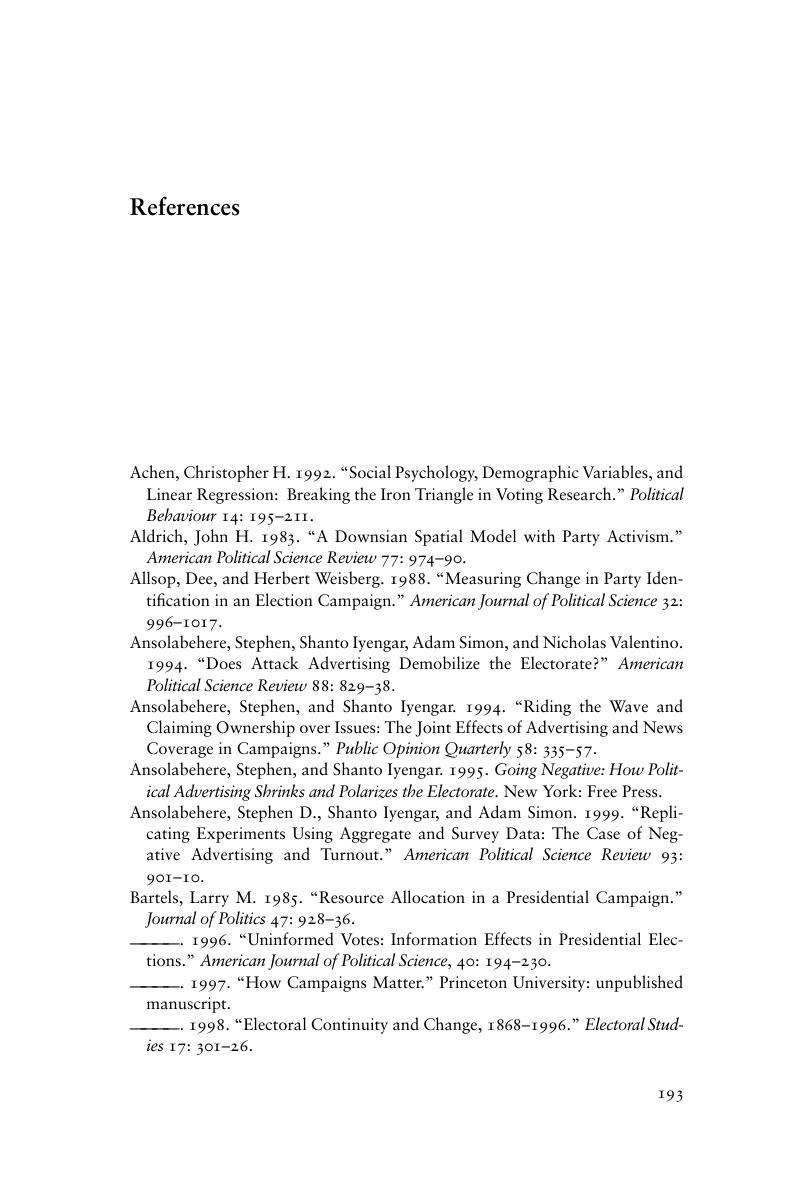Book contents
- Frontmatter
- Contents
- Acknowledgments
- 1 Introduction
- 2 The Evolution of Vote Intentions
- 3 The Landscape
- 4 Ads and News: The Campaign as a Natural Experiment
- 5 The Economy, Clinton, and the First Phase
- 6 Candidate Traits and the Second Phase
- 7 Social Security and the Third Phase
- 8 Conclusions
- Appendix
- References
- Index
- References
References
Published online by Cambridge University Press: 28 May 2010
- Frontmatter
- Contents
- Acknowledgments
- 1 Introduction
- 2 The Evolution of Vote Intentions
- 3 The Landscape
- 4 Ads and News: The Campaign as a Natural Experiment
- 5 The Economy, Clinton, and the First Phase
- 6 Candidate Traits and the Second Phase
- 7 Social Security and the Third Phase
- 8 Conclusions
- Appendix
- References
- Index
- References
Summary

- Type
- Chapter
- Information
- Publisher: Cambridge University PressPrint publication year: 2004



